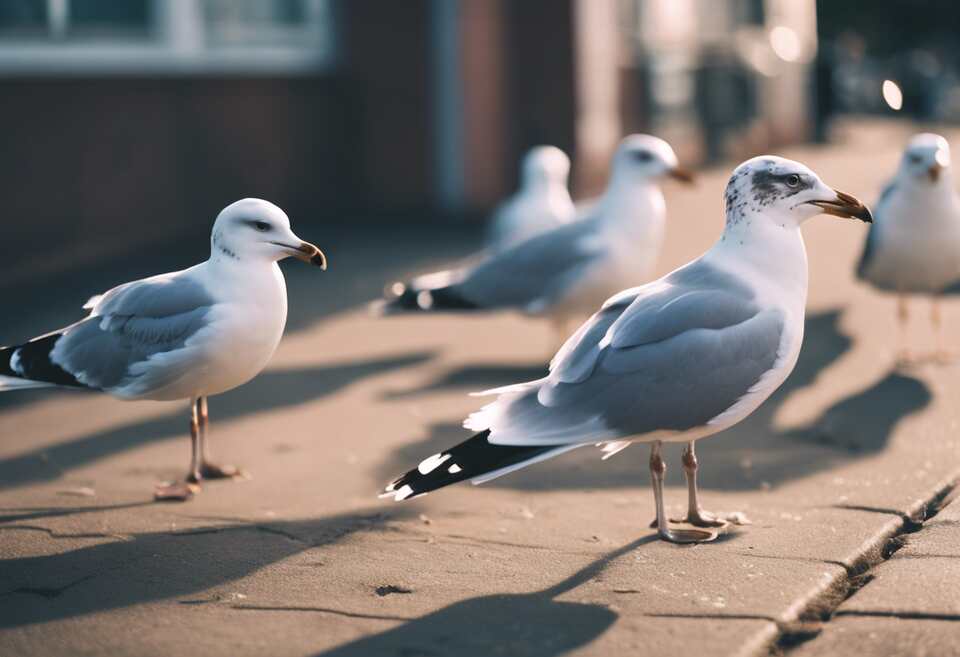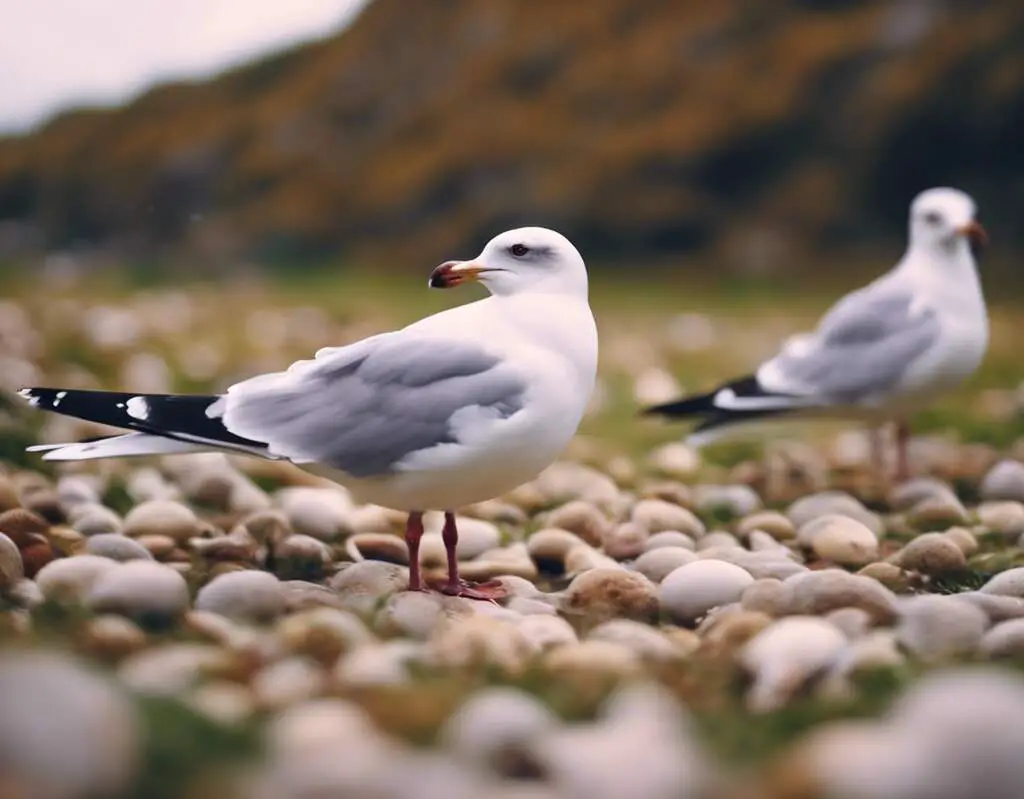Seagulls, often spotted gracefully gliding in the sky or perched along coastlines, have a diverse diet that adapts to their scavenger nature. Understanding what seagulls eat can provide insights into their behavior and habitat preferences.
Table of Contents
Seagull Diet: Unveiling What Seagulls Eat
Seagull Feeding Habits
Seagulls are opportunistic feeders, meaning they will consume a wide variety of food depending on availability. Their diet is influenced by their coastal habitat, with easy access to both marine and terrestrial food sources.
Marine Delicacies
A significant portion of a seagull’s diet is sourced from the sea. Fish, in various forms, including small species like herring, sardines, and anchovies, are staples for these birds. Seagulls are adept fishers, hovering over the water before diving to catch their prey.
Scavenging for Survival
Seagulls are renowned for their scavenging skills, often seen rummaging through garbage bins or picnic leftovers. They are not picky eaters and will consume human food scraps, insects, crustaceans, and even small animals like rodents.
Dietary Adaptations
Seagulls have adapted to urban environments, where they scavenge for human-provided food. This behavior has led to concerns about their impact on waste management and public health, as they can spread diseases through contaminated food sources.
Nesting Season Nutrition
During the breeding season, seagulls focus on high-protein diets to support egg formation and chick rearing. They may increase their consumption of mollusks, worms, and other marine invertebrates to meet the nutritional demands of reproduction.
Agricultural Interactions
In some regions, seagulls interact with agricultural practices by foraging in fields for crops like grains and seeds. While this behavior can sometimes lead to conflicts with farmers, seagulls play a role in pest control by consuming insects that damage crops.
Human Interaction Impact
As human activities continue to encroach on seagull habitats, these birds have adapted to rely on human-related food sources. This behavior shift can have both positive and negative consequences, affecting seagull populations and human perceptions of these coastal creatures.
Conservation Considerations
Understanding the dietary habits of seagulls is crucial for conservation efforts aimed at preserving their natural habitats and biodiversity. Balancing ecosystem health with human-seagull interactions is essential for the long-term sustainability of these charismatic seabirds.
Seagulls have a versatile diet that reflects their adaptive nature and ability to thrive in various environments. By exploring what seagulls eat, we gain a deeper appreciation for these birds and the interconnectedness of their food sources with human activities.

Factors Influencing Seagull Feeding Habits
Seagulls are opportunistic feeders with a diverse diet that varies based on several factors. Understanding what influences seagull feeding habits can provide valuable insights into these fascinating birds’ behavior and ecosystem dynamics.
Environmental Factors
Environmental factors play a crucial role in determining what seagulls eat. Seagulls adapt their feeding habits based on the availability of food sources in their surroundings. Coastal seagulls, such as the herring gull, often feed on fish, crabs, and other marine creatures found along the shore. In inland areas, seagulls may scavenge for food in urban settings, feeding on human waste, scraps, and discarded food items.
Seasonal Variations
Seasonal changes influence the abundance of certain food sources, impacting seagulls’ eating habits. During the breeding season, seagulls focus on high-protein foods to support their energy needs and chick development. They may feed on a diet rich in fish, insects, and small mammals. In winter, when food sources are scarce, seagulls may resort to scavenging for survival, consuming carrion, garbage, and other alternative food sources.
Nesting Behavior
Seagull nesting behavior also affects their feeding habits. Adult seagulls feeding their chicks prioritize nutrient-rich foods to ensure the health and growth of their offspring. This often includes regurgitated fish and other high-protein items. Seagulls near their nesting sites may exhibit territorial behavior, aggressively defending food sources to protect their chicks and maintain dominance within their colony.
Social Interactions
Social interactions within seagull colonies can influence their feeding behaviors. Dominant individuals may have preferential access to food resources, dictating what is available for other birds within the group. Seagulls may engage in cooperative feeding behaviors, such as flocking together to exploit food patches or signaling each other to potential food sources. Competition for food within a colony can lead to hierarchical structures that impact individual seagulls’ access to resources.
Human Impact
Human activities significantly impact seagull feeding habits and dietary preferences. Pollution, overfishing, habitat destruction, and improper waste disposal can disrupt natural food chains, forcing seagulls to adapt to alternative food sources. Seagulls often scavenge in urban areas, feeding on human leftovers and discarded food. Feeding on human-provided food can lead to health issues for seagulls, as processed foods may lack essential nutrients required for their well-being.
Seagull feeding habits are influenced by a combination of environmental, seasonal, social, nesting, and human-related factors. By studying these influences, researchers can gain a better understanding of seagulls’ dietary needs and behaviors, contributing to conservation efforts and ecosystem management strategies.
Conclusion
Understanding what seagulls eat sheds light on their vital role in the ecosystem and how they adapt to various environments. While seagulls are often misunderstood creatures associated with scavenging, their diet is diverse and well-suited to their coastal habitats. Factors such as availability, seasonality, and location greatly influence seagull feeding habits, showcasing their remarkable ability to adapt and thrive in different conditions. By observing their feeding behaviors and preferences, we can appreciate the resilience and resourcefulness of these fascinating birds.
Seagulls play a crucial role in balancing marine ecosystems by controlling populations of small fish, crustaceans, and insects. Their diet consists of various marine organisms, vegetation, and human scraps, highlighting their versatility as opportunistic feeders. From hunting for fish and squid to foraging on beaches for crabs and mollusks, seagulls showcase a remarkable range of feeding behaviors that demonstrate their adaptability and intelligence.
Factors such as environmental changes, human activities, and competition with other species can impact seagull feeding habits. Pollution, overfishing, and habitat destruction pose significant challenges to seagulls, affecting the availability of their natural food sources. In urban areas, seagulls have learned to scavenge for human food waste, leading to conflicts with humans and other wildlife. Understanding these influences is essential for implementing conservation efforts and promoting coexistence between seagulls and human communities.
By studying the diet of seagulls and the factors that influence their feeding habits, researchers can gain valuable insights into the health of marine ecosystems and the impacts of environmental changes. Efforts to protect seagull populations and their habitats are crucial for maintaining biodiversity and preserving the delicate balance of coastal ecosystems. Educating the public about the importance of seagulls and promoting responsible waste management practices can help reduce human-wildlife conflicts and create a more sustainable environment for these iconic seabirds.
Seagulls are fascinating creatures with unique dietary preferences and feeding behaviors that reflect their adaptability and resilience in diverse environments. By appreciating what seagulls eat and the factors that influence their feeding habits, we can deepen our understanding of these birds and their critical role in marine ecosystems. Protecting seagull populations and their habitats is essential for ensuring a healthy and balanced coastal ecosystem for future generations to enjoy.



